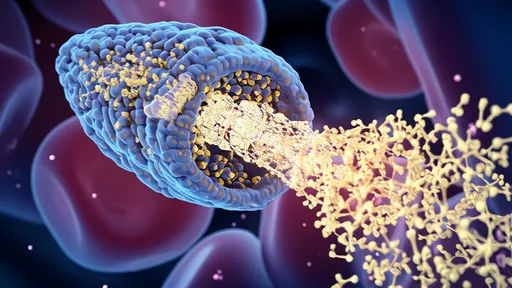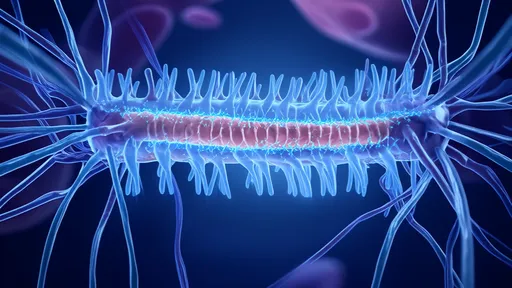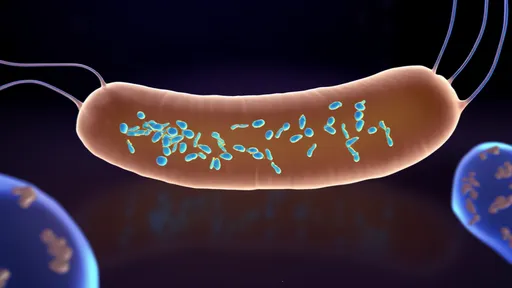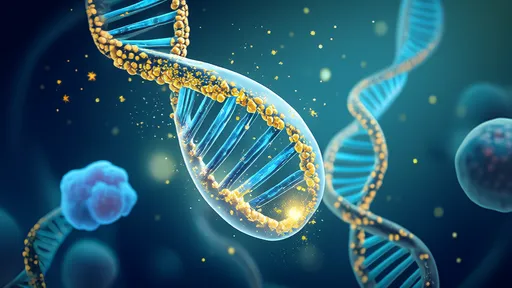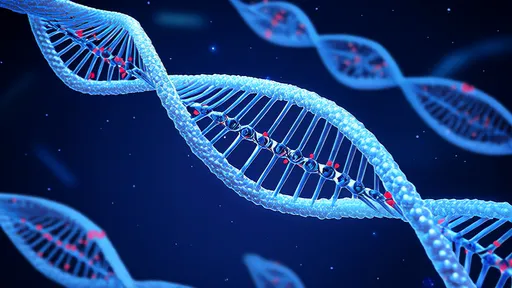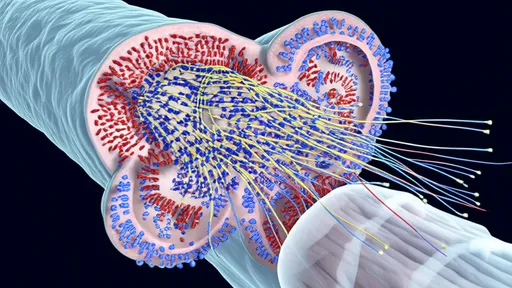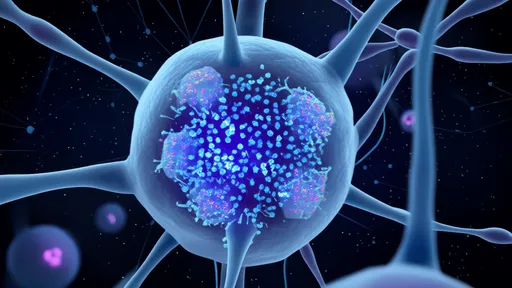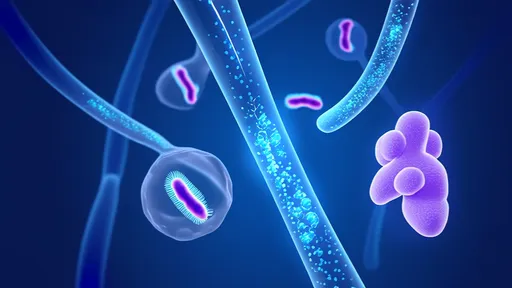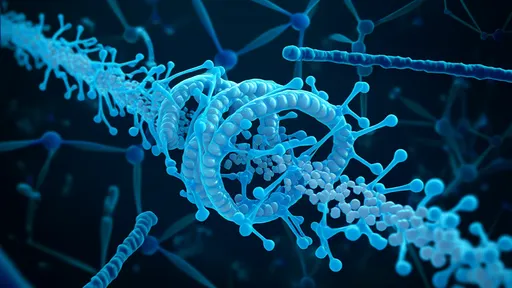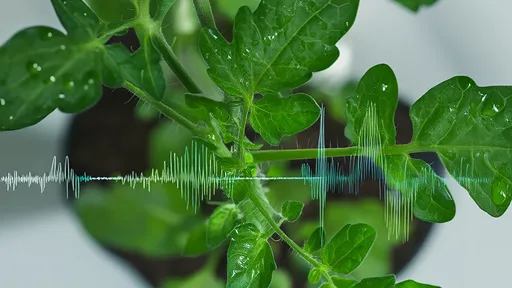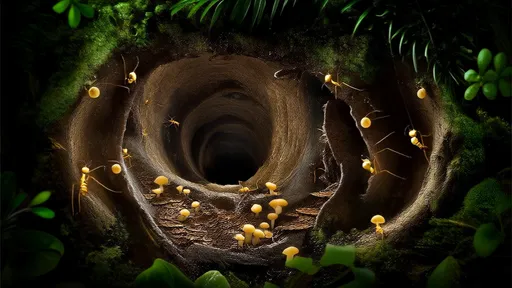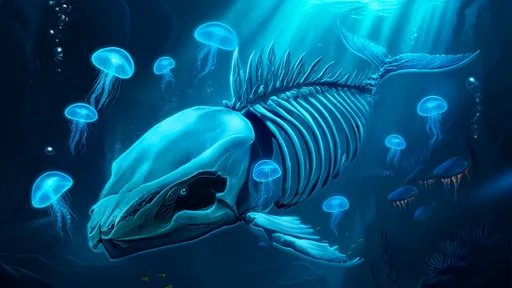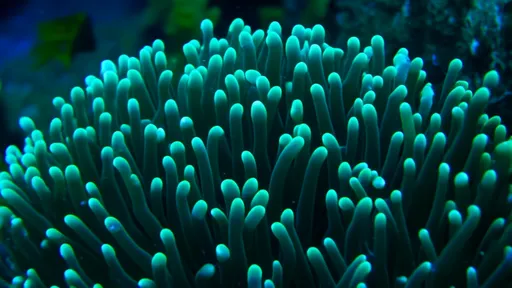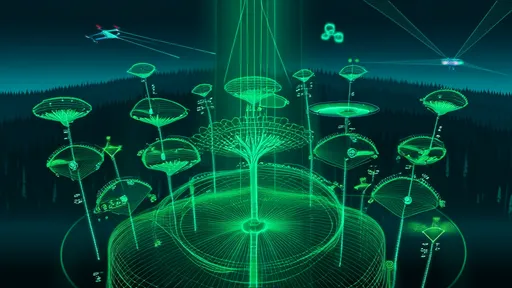The depths of the ocean hold secrets that continue to astonish scientists, and among the most enigmatic phenomena is the "whale fall"—the carcass of a deceased whale sinking to the seabed. These massive organic deposits create transient ecosystems, supporting diverse marine life for decades. But beyond the visible scavengers and bone-eating worms, a hidden microbial world thrives, and within it, something extraordinary has been discovered: colossal bacteriophages, viruses that prey on bacteria, with genomes so large they defy conventional understanding.
Recent research has revealed that whale falls act as "viral arks," fostering the evolution of giant phages. These viruses, some with genomes exceeding 735,000 base pairs—dwarfing many bacteria—challenge the traditional boundaries between life and non-life. Their discovery in the nutrient-rich sediments surrounding decomposing whales suggests that these environments serve as hotspots for viral diversity and innovation, where phages exchange genetic material and evolve novel mechanisms to infect their bacterial hosts.
The Whale Fall Ecosystem: A Viral Playground
When a whale carcass descends to the ocean floor, it becomes a hub of biological activity. Anaerobic bacteria break down lipids and proteins, releasing sulfides that fuel chemosynthetic organisms. Amid this microbial frenzy, phages engage in a constant arms race with their bacterial prey. The extreme conditions—high pressure, low temperature, and limited oxygen—create a pressure cooker for viral evolution, selecting for phages with unique adaptations.
Scientists sampling whale fall sediments have identified phages carrying genes typically found only in cellular organisms, including CRISPR-Cas systems and tools for metabolic reprogramming. These genetic thefts suggest that giant phages are not mere parasites but active manipulators of bacterial behavior, potentially influencing nutrient cycling in the deep sea. One particularly striking find was a phage encoding proteins similar to those used by mitochondria, hinting at an ancient and intimate relationship between viruses and the evolution of life itself.
Giant Phages: Blurring the Lines Between Life and Non-Life
The sheer size of these phages’ genomes forces a reevaluation of what constitutes a virus. Unlike their smaller cousins, giant phages possess genes for translation machinery, DNA repair, and even viral defense systems—traits once thought exclusive to cellular life. Some researchers argue they represent a missing link between viruses and more complex organisms, a notion supported by their ability to form nucleus-like compartments within infected bacteria.
One hypothesis is that whale falls, with their abundant and diverse bacterial communities, provide the perfect breeding ground for phages to experiment with new genetic material. As bacteria evolve resistance, phages counter with increasingly sophisticated weaponry, leading to an expansion of their genomic repertoire. This "gene shopping" may explain why whale fall phages carry genes with no known viral function, some of which could be repurposed to enhance infectivity or evade bacterial immunity.
Implications for Marine Ecology and Beyond
The discovery of giant phages in whale falls has far-reaching implications. These viruses likely play a critical role in regulating bacterial populations, preventing any single species from dominating the decomposition process. By lysing bacteria, they release nutrients back into the ecosystem, sustaining other organisms in the food web. Moreover, their genetic toolkit—filled with novel enzymes and metabolic pathways—could hold untapped potential for biotechnology, from antibiotic alternatives to carbon capture technologies.
Perhaps most intriguing is the possibility that whale falls act as reservoirs for viral diversity, preserving ancient phage lineages that might otherwise vanish. As climate change and human activities alter the oceans, understanding these viral arks becomes urgent. They are not just graveyards for giants but cradles of evolutionary innovation, where the tiniest entities—viruses—shape the fate of the deep sea’s hidden ecosystems.
Future expeditions aim to uncover more about these viral behemoths, sequencing their genomes and probing their interactions with bacterial hosts. What began as a study of whale decomposition has opened a new frontier in virology, revealing that even in death, the largest creatures on Earth nurture some of the smallest—and most mysterious—forms of "life."
For decades, the blood-brain barrier (BBB) has stood as a formidable gatekeeper, selectively shielding the brain from harmful substances while frustrating efforts to deliver life-saving therapeutics. This biological fortress, while essential for protecting our most vital organ, has rendered many promising treatments for neurological disorders ineffective. Now, a groundbreaking approach combining protein engineering and artificial intelligence is cracking the code to safe BBB penetration, potentially revolutionizing treatment for Alzheimer's, Parkinson's, and brain cancers.
In a groundbreaking development that could revolutionize the treatment of spinal cord injuries, researchers have successfully engineered hydrogel-based optical fibers capable of mimicking neural pathways. These "neural optical fibers" represent a fusion of advanced materials science and neurobiology, offering new hope for patients with previously untreatable damage to their central nervous system.
In a groundbreaking discovery that could revolutionize our approach to plastic waste, scientists have identified a surprising ally in the fight against polyethylene pollution: the humble wax worm. More specifically, the bacteria residing in the gut of these caterpillar-like creatures have demonstrated an extraordinary ability to break down one of the world's most stubborn plastics. This finding opens new avenues for tackling the global plastic crisis through biological means.
In a groundbreaking development that challenges our understanding of aging, scientists have demonstrated the potential to reverse cellular aging through a technique called transient reprogramming. This approach temporarily rewinds the epigenetic "clock" of cells without erasing their identity, opening new possibilities for regenerative medicine and age-related disease treatment.
In a groundbreaking leap for precision medicine, researchers have unveiled a light-controlled CRISPR delivery system using DNA-origami "nanodrones" – a fusion of nanotechnology and gene editing that promises unprecedented control over therapeutic targeting. This innovation, emerging from a collaboration between bioengineers and geneticists, reimagines drug delivery by combining the programmability of DNA nanostructures with the spatial precision of optogenetics.
In a groundbreaking study that could reshape our understanding of consciousness, neuroscientists have identified the thalamic reticular nucleus (TRN) as a potential "rhythmic switch" governing wakefulness through gamma wave modulation. This almond-shaped inhibitory structure, often described as the brain's gatekeeper, appears to orchestrate states of awareness by tuning neural oscillations like a conductor leading a symphony of consciousness.
For decades, chronic pain has remained one of medicine's most elusive challenges – a complex interplay of biological, psychological, and social factors that often defies conventional treatment. Now, groundbreaking research into the spinal cord's neural "fingerprints" of pain is revolutionizing our understanding of how persistent pain becomes etched into the nervous system. Scientists are mapping specialized neural circuits that appear to encode chronic pain with remarkable specificity, opening new avenues for targeted therapies.
In a groundbreaking discovery that reshapes our understanding of brain metabolism, researchers have identified glial cells as the unsung architects of neuronal energy distribution. The study reveals how these long-overlooked support cells orchestrate the precise mitochondrial allocation to neurons, challenging the neuron-centric dogma of neuroscience. This paradigm shift underscores glial cells' role as metabolic conductors in the symphony of brain function.
Scientists have uncovered a startling new pathway by which gut microbes communicate with the brain at lightning speed. Dubbed the "10-second gut-brain superhighway," this discovery centers on the vagus nerve's ability to transmit microbial signals faster than previously thought possible. The findings could revolutionize our understanding of conditions ranging from depression to irritable bowel syndrome.
In a groundbreaking discovery that bridges molecular biology and neuroscience, researchers have uncovered how the CPEB protein acts as a "molecular glue" to solidify long-term memories through an elegant phase transition mechanism. This finding not only revolutionizes our understanding of memory persistence but also reveals nature's ingenious solution to maintaining information at the molecular level.
In a groundbreaking discovery that blurs the line between botany and acoustics, researchers have uncovered evidence of tomatoes employing ultrasonic warfare against herbivorous insects. The study, published in Nature Plants, reveals how tomato plants emit high-frequency sounds when under attack - not as passive victims, but as active participants in their own defense.
In the dense rainforests of Central and South America, leafcutter ants have perfected an architectural marvel that puts human climate control systems to shame. These tiny engineers construct elaborate underground nests spanning hundreds of square feet, maintaining near-perfect temperature and humidity levels year-round – without using a single watt of electricity. As architects and engineers grapple with the urgent need to reduce building emissions, these insect-built structures offer profound lessons in passive climate regulation.
The depths of the ocean hold secrets that continue to astonish scientists, and among the most enigmatic phenomena is the "whale fall"—the carcass of a deceased whale sinking to the seabed. These massive organic deposits create transient ecosystems, supporting diverse marine life for decades. But beyond the visible scavengers and bone-eating worms, a hidden microbial world thrives, and within it, something extraordinary has been discovered: colossal bacteriophages, viruses that prey on bacteria, with genomes so large they defy conventional understanding.
In a groundbreaking discovery that could revolutionize coral reef monitoring, scientists have identified a natural early warning system for coral bleaching events. Certain coral species exhibit vivid fluorescent patterns when under thermal stress, acting as biological "sentry lights" that signal the onset of bleaching before visible damage occurs. This phenomenon, observed in reef-building corals across the Indo-Pacific, represents nature's own climate change alert system.
In a groundbreaking development for ecological research and climate science, researchers have harnessed advanced LiDAR technology to map the photosynthetic efficiency of trees across vast forested areas. Dubbed the "carbon pulse" of forests, this innovative approach provides unprecedented insights into how trees absorb and process carbon dioxide at an ecosystem scale. The implications for understanding carbon sequestration, forest health monitoring, and climate change mitigation strategies are profound.
